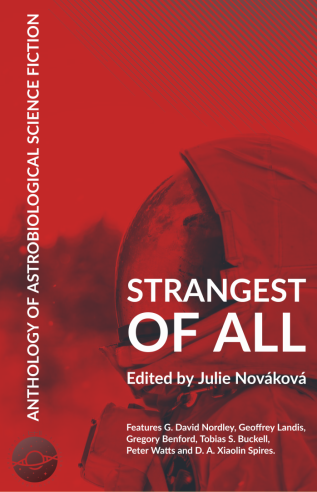“Strangest of All”: Astrobiology outreach through science fiction
- 1European Astrobiology Institute (julie.novakova@gmail.com)
- 2Charles University, Faculty of Science, Prague, Czechia (julie.novakova@natur.cuni.cz)
Science fiction has and for a long time has had a potential to reach wide public and influence its perception of various matters. It may, therefore, serve as a good material for outreach purposes to get actual science across to the public. In a time when the public interest in science dwindles across multiple regions of the worlds and its perception is often skewed by hasty reporting, such a concept that can grasp the attention of people across a wide spectrum of demographics is most useful. Indeed, science fiction has been used in STEM education e.g. in lectures and books by James Kakalios or Andrew Fraknoi, who even keeps an irregularly updated list of SF stories featuring good astronomy [1].
For outreach and educational purposes at the European Astrobiology Institute (EAI), we have compiled an anthology titled “Strangest of All” [2] (see cover in Fig. 1) that contains eight science fiction reprint stories by respected authors, showcasing the following astrobiological topics: 1) life in a subsurface ocean, 2) life under high pressure, 2) possibilities for exotic life in the Kuiper Belt, 4) exotic photosynthesis, 5) Dyson spheres, 6) the SETI program, 7) the Fermi Paradox, and 8) planetary protection. Each story is accompanied by a nonfiction follow-up article and classroom tips written by the editor and biologist Julie Nováková, who has experience in science and teaching as well as SF writing and publishing. The anthology was made available for free download at the websites of the European Astrobiology Institute and the editor. Its publication was featured on multiple science outreach and SF literature platforms in several languages. The book was further popularized by follow-up interviews with the authors, who include well-known scientists and at the same time writers such as University of California’s Gregory Benford or NASA’s Geoffrey Landis.
The following example illustrates how a SF story can be used to showcase practical aspects of astrobiology and support interest and critical thinking: “War, Ice, Egg, Universe” by G. David Nordley (orig. in Asimov’s, 2002) shows intelligent species on a moon harboring a liquid water ocean underneath an ice shell. The story can not only be used to i) point out the existence and detection methods of such oceans on multiple moons within our solar system, but also to ii) illustrate the possible conditions of such an environment and the impact they would likely have on local life, should any exist, iii) mention analog environments on Earth, iv) let the readers question the premise of intelligent life – would there be sufficient resources to even support multicellularity, can we constrain and calculate the biomass e.g. Europa or Enceladus could support, etc. If used as a school exercise, students may be divided into groups to research and critically discuss various aspects of the theme.
The book has been downloaded several thousand times as of the time of submitting the abstract, and has elicited good reviews on Goodreads. In the future, we hope to follow up on “Strangest of All” with a print anthology of SF stories written originally for the project in direct collaboration with experts, each of whom will write the nonfiction follow-up. We are also planning to utilize science fiction with good science and interesting themes in other outreach activities such as contests and exhibitions, and to evaluate the impact of such activities using e.g. Europlanet’s Outreach Evaluation Toolkit [3]. A project team “Science Fiction as A Tool of Astrobiology Outreach and Education” has been founded at the EAI.
[1]. Astronomical Society of the Pacific: EDUCATION & OUTREACH: Resource Guides: Science Fiction Stories with Good Astronomy & Physics: A Topical Index. Available at: (Accessed: 28th June 2020)
[2]. Nováková, Julie (European Astrobiology Institute): STRANGEST OF ALL: AN ANTHOLOGY OF ASTROBIOLOGICAL SF. Available at: (Accessed: 28th June 2020)
[3]. Europlanet Society: EUROPLANET EVALUATION TOOLKIT. Available at: (Accessed: 28th June 2020)

Fig. 1: Book cover of "Strangest of All".
How to cite: Nekola Nováková, J.: “Strangest of All”: Astrobiology outreach through science fiction, Europlanet Science Congress 2020, online, 21 September–9 Oct 2020, EPSC2020-1010, https://doi.org/10.5194/epsc2020-1010, 2020

